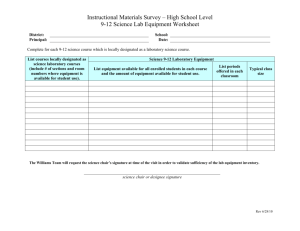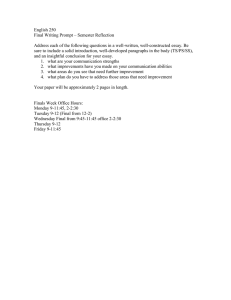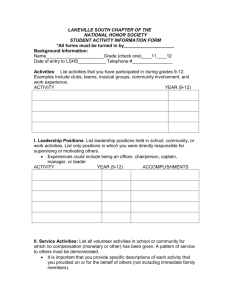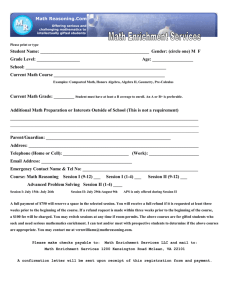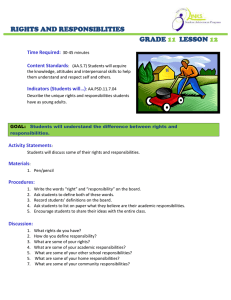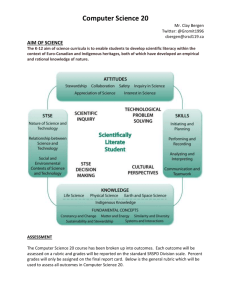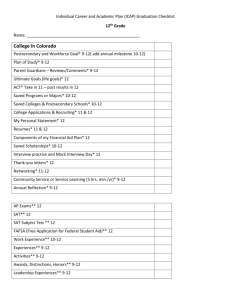WVDE Policy 2510 Assuring Quality of Education: Regulations for Education Programs
advertisement
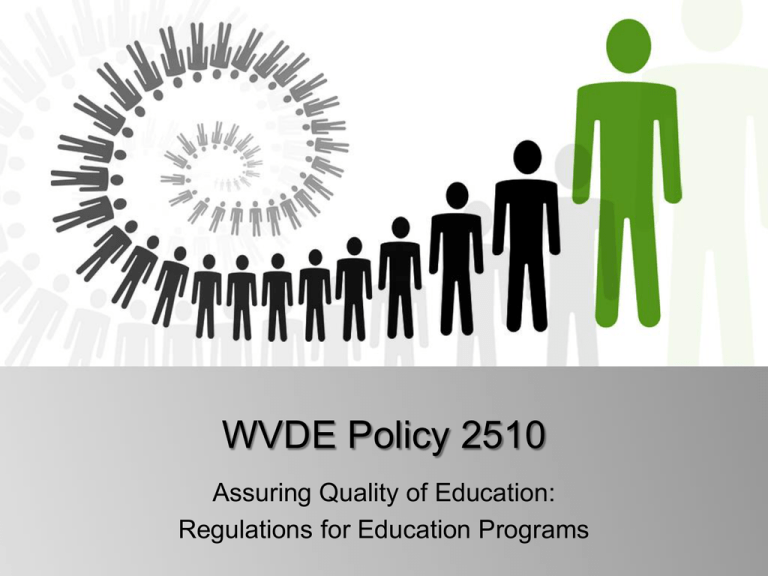
WVDE Policy 2510 Assuring Quality of Education: Regulations for Education Programs Rationale for Change • Removing barriers and providing greater flexibility to districts, schools, and teachers to personalize the learning process for students • Major impact on elementary and middle schools with minor impact on high schools • Embodies two paradigm shifts – Paradigm Shift 1 • From - Time is constant and learning is variable • To – Learning is constant and time is the variable – Paradigm Shift 2 • Establishing conditions for effective learning rather than teaching Primary Elementary (K-2) (page 8) • Removes time requirements for Reading/English Language Arts and Mathematics but maintains the requirement for daily instruction • Emphasis on proficiency and mastery of content rather than seat/instructional time • Emphasizes varied classroom scenarios to promote inquirybased learning • Allows for meaningful integration of subjects • Only time restraint is for physical education as required by WV code Intermediate Elementary (3-4) (page 9) • Removes time requirements for Reading/English Language Arts and Mathematics • Emphasis on proficiency and mastery of content rather than seat/instructional time • Emphasizes varied classroom scenarios to promote inquirybased learning • Allows for meaningful integration of subjects (reference 5.4) • Only time restraint is for physical education as required by WV code Middle Level Education (5-8) (page 11) • Removes the requirement for Reading/English Language Arts and Mathematics to be taught in a block of not less than 180 minutes – still requires daily instruction of four core areas • Emphasis on proficiency and mastery of content rather than seat/instructional time • Embodies the team approach of time allocations • Will need to take a serious look at the recommendation of Algebra I for 8th graders in professional pathway during next revision cycle Middle Level Education (5-8) (page 12-13) • 5.5.2.b – tentative high school educational pathway replaces career cluster • 5.5.2.g – really a high school issue, but is listed with other items pertaining to the ISTP (5.5.2) – new item requiring an annual review of the ISTP in grades 9-12 Adolescent Education (9-12) (page 13) • 5.6 – last sentence basically reiterates the same as 5.5.2.g requiring the annual review of ISTP • One single chart for graduation requirements effective with all students 2011-2012 – Chart V Adolescent Education (9-12) (page 14-15) • Chart V – Effective for all students 2011-12 – ELA: clarified with specific AP courses listed – Math: no change other than clarification of possible course sequences in footnote 1 – Science: removal of required chemistry for all and replaced with “one additional rigorous lab science course” – greater flexibility for students to personalize learning based upon post-secondary aspirations – Social Studies: simply clarifies which AP course can replace regular courses Adolescent Education (9-12) (page 14-17) • Chart V – Brings the definition of pathways in line with current practice – Changes definition to emphasize structured career development for all students 9-12 – Adds one sentence regarding students being provided opportunities for advanced technology applications – Footnotes: adds clarity to the items on the chart - read for guidance – Added one additional CTE course that can be used for arts credit Adolescent Education (9-12) (page 18-19) • Chart VI – Elective Courses – Note: Any college or dual credit course offered in lieu of a graduation requirement must first receive a WVBE waiver – AP courses: specifies that of the four required courses to be offered, at least one must be from each core area (if not possible a WVBE waiver will be required) – Required Electives • Changes name of the Transition Mathematics course • Adds Chemistry – Optional Electives • Deletes Integrated Math I, II, III, IV • Addition of various courses – Removes career development definition because it was redundant Adolescent Education (9-12) (page 20, 21, 23, 35) • College Board AP Courses – – – – Four required (one in each of the four core areas) Students strongly encouraged to take the corresponding examination All AP courses MUST have a syllabus approved by the College Board 5.6.4.a.A: “Schools shall provide information regarding the availability of advanced courses to students and strongly encourage students to take such courses based upon the results of the ACT PLAN, student interest and postsecondary goals.” – 5.6.6.d: • Teachers of AP courses must have approved training (2012-2013) • AP WV Virtual School options for AP are acceptable (not new) • Must offer weighted grades (not new) – 7.5.3.h,i,j: • AP training defined and explained (effective 2012-13) • High School principals training session bi-annually (2012-13) • AP coordinators attend training annually (2012-13)
